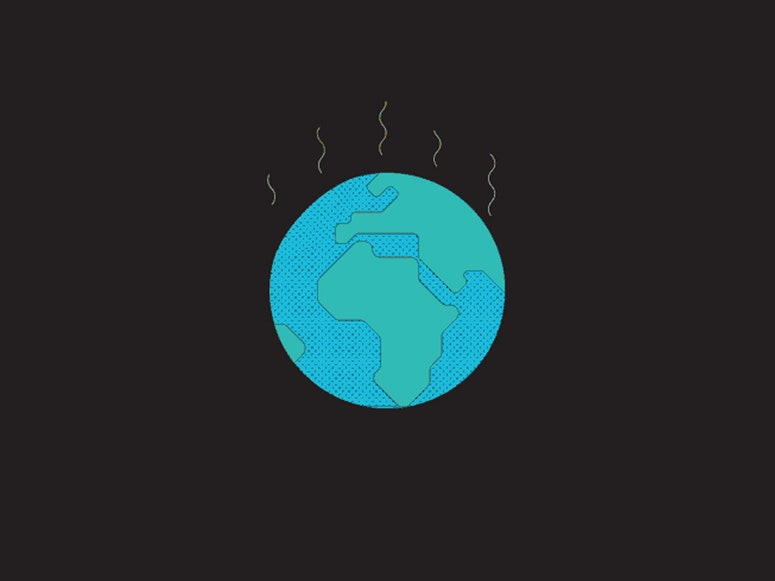Wander into nature and give a good shout, and only nearby birds, frogs, and squirrels will hear you. Although sensing noise is a critical survival strategy for land animals, it’s a somewhat limited warning system, as sounds—save for something like a massive volcanic explosion—don’t travel far in air. They propagate much better through water, with undersea noises traveling hundreds or even thousands of miles, depending on the conditions.
Those conditions are rapidly transforming as the oceans warm. Changes in salinity, temperature, and pressure change how the sea sounds, with unknown impacts on the life-forms that depend on that noise to survive. Whales talk amongst themselves and navigate with Earth’s tones by listening to waves breaking on shorelines. Dolphins echolocate their prey with blasts of sound. Coral-dwelling fishes are born in the open ocean, but then use the noises of the bustling reef to find home. And joining the sounds of life are the sounds of Earth systems: Winds scour the surface of the sea, which takes an extra pounding during storms. Earthquakes and submarine landslides send rumbles across whole oceans. The resulting tsunamis speed along the surface, making a racket—which marine animals are perfectly accustomed to.
It’s a critical, and critically understudied, aspect of how rising temperatures—and increasing noisy activity like shipping—might be affecting marine ecology. “The soundscape of nature really only came to the forefront of people’s thinking in the last 10 or 15 years,” says Ben Halpern, a marine ecologist at UC Santa Barbara, who studies pressures on ocean ecosystems. Scientists are now, for instance, getting a better idea of forest biodiversity by listening for life—insects, birds, amphibians—that might be hidden from the human eye. “It’s only more recently that people are starting to be aware of the role of soundscapes in oceans, telling us a story about what’s happening underwater as human impacts expand,” adds Halpern.
Since sound travels faster and farther through water than through air, “neighborhoods” are bigger in the ocean. (Birds can communicate hundreds of feet, but for whales it’s hundreds of miles.) How sound propagates over this area depends on the temperature, pressure, and salinity of the water. That’s because sounds are themselves pressure waves, which compress and decompress molecules in the water. When that water is warmer, molecules vibrate faster, allowing sound waves to travel faster. Pressure is higher the deeper you go. Salinity can change too if, say, you’re near a glacier that’s injecting freshwater into the sea.
This creates a sort of stratification: Temperature, salinity, and pressure combine in different ways, in turn influencing how sound propagates. “Think about it like oil and vinegar before you shake the salad dressing, but the ocean is made of different layers of salinity and different temperatures,” says bioacoustics researcher Alice Affatati of the Memorial University of Newfoundland and Italy’s National Institute of Oceanography and Applied Geophysics. Because these layers are distinct, sounds can bounce off them. “So if you imagine a whale as a source of acoustic waves, it matters where the whale is. If it is in deeper layers or shallower layers, even the same sounds it produces will vary the propagation,” she says.
Affatati and her colleague Chiara Scaini, also at the National Institute of Oceanography and Applied Geophysics, published research last month into how a changing ocean might be influencing the soundscape of a particular species, the North Atlantic right whale. They used a trove of previous data on those variables—temperature, pressure, and salinity—to identify two hot spots of change, a patch in the Greenland Sea and another off of Newfoundland. Here, the average speed of underwater sound could jump by more than 1.5 percent by the year 2100. This would make the whales’ calls travel farther, with unknown effects on how the species communicates.
The two researchers hope other scientists will use the same framework to investigate the changing soundscapes for other marine life. “It provides a starting point to other studies that can investigate, for example, how different species react to the same changes,” says Scaini. “The impact of this on marine life is something that is not known, because there are many variables that are involved. So it is not an easy problem that we can model.”
It’s no accident, though, that Scaini and Affatati identified the Greenland Sea as a place that’s changing. The Arctic is warming up to four times faster than the rest of the planet, in large part because as ice melts, it exposes darker ocean waters, which absorb more of the sun’s energy. The Pacific Ocean is also sending a shallow “acoustic duct” of warm water into the Arctic, which has been strengthening and dramatically changing the soundscape, according to a 2016 paper. In other words: The Pacific is essentially injecting sound into the Arctic marine ecosystem.



